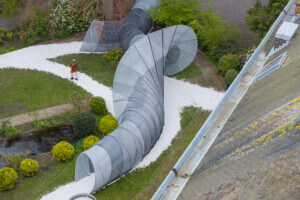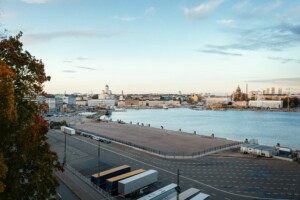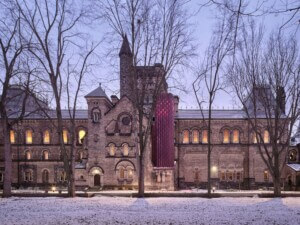Following an atypical late spring edition staged last year in a non-shoreline locale due to the COVID-19 crisis, the Winter Stations international design competition is returning to Toronto’s Woodbine Beach for a cold-weather exhibition of temporary architecture meant to draw residents and visitors to the city’s largely empty lakefront during the chilly months. Like with pre-COVID editions of the popular public art competition that is now in its eighth iteration, submitted designs proposals must incorporate existing, seasonally disused lifeguard stands.
However, due to the success of last year’s off-beach exhibition, one of 2022’s three winning submissions, Wildlife-guard Chair, will first be realized at Pier 8 in Hamilton as part of that neighboring city’s Winterfest celebrations. After a several-week stint in Hamilton beginning in mid-February, the installation will then be relocated to Woodbine Beach in early March where it will join the other two competition-winning designs and a trio of student-produced designs from students at Ryerson University, University of Toronto, and the University of Guelph. Per a press announcement, Winter Station’s organizers are also actively searching for spots to hold spring and summertime exhibitions. The six winning Winter Stations will be on view at Woodbine Beach until the end of March barring any COVID-related restrictions that might be enacted down the line.
The theme of this year’s competition was “Resilience” and, as noted by the organizers, participating designers were “asked to celebrate the ability of people to withstand and push through challenging and unprecedented times. This year, artists were asked to not only reflect on all the ways people have had to be resilient, but the ways people have channeled this resilience, be it through communities, movements, support networks, and more.”
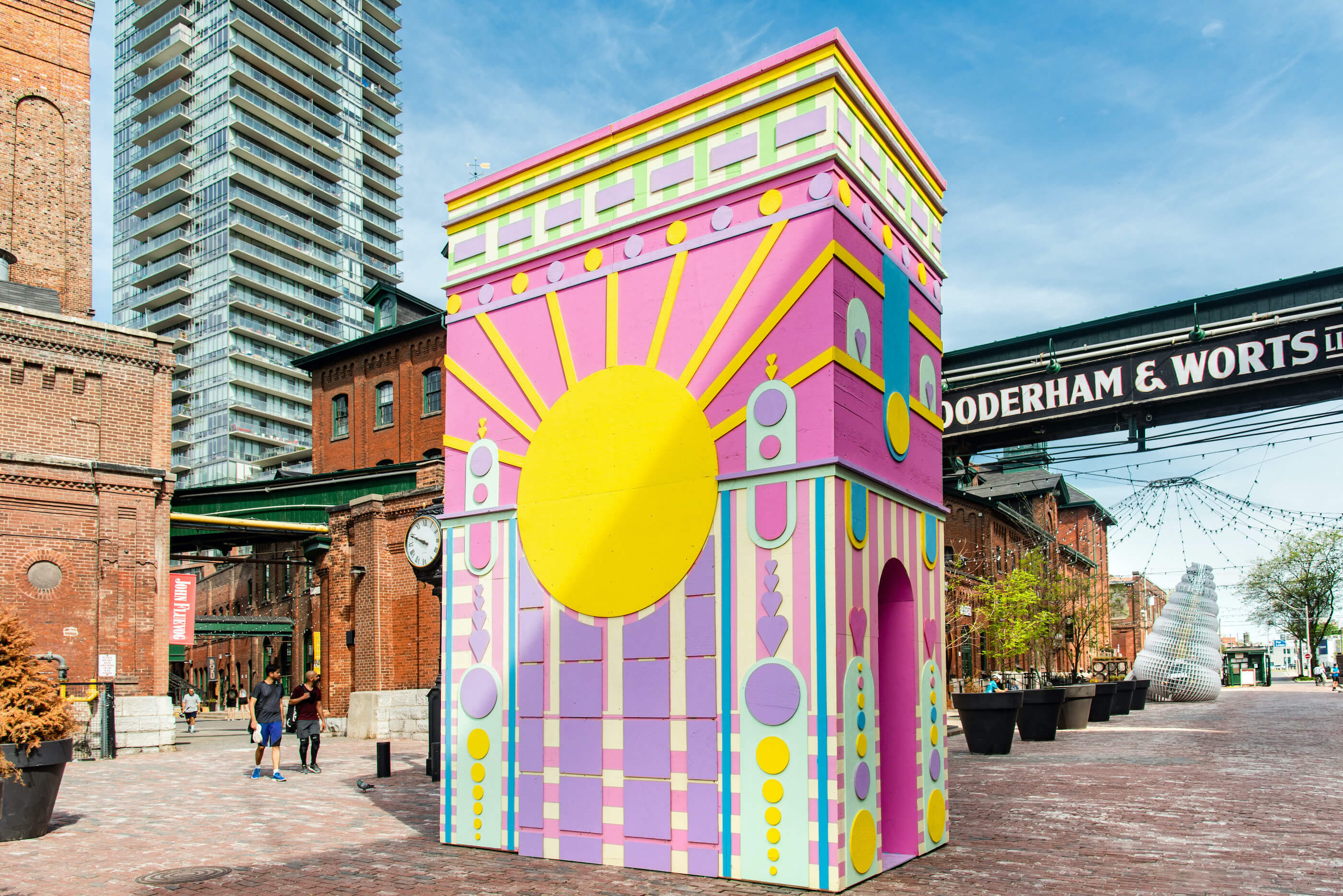
One winning station, THE HIVE, has been dedicated to the individuals who lived at YWCA Toronto’s temporary emergency shelter at Kingston Road and Queen Street East during the pandemic. Per the announcement, residents and staff of the shelter were drawn to THE HIVE’s “vibrant colours and how it represents resilience and hope in building community in unprecedented times.”
“With all the uncertainty over the past two years, we’re overjoyed that Winter Stations can once again return to the spot it began—on the Beach,” said Winter Stations founder and RAW Design director Roland Rom Colthoff in a statement. “It’s great to be able to offer Torontonians a distanced and safe event to look forward to this winter. Whether it’s your first time seeing the exhibits, or you’re returning for another year, we hope you enjoy the installations that artists and designers from around the world worked so hard to create.”
Winter Stations was first launched in 2015 by RAW Design along with Ferris + Associates, and Curio. This year’s installations will be constructed by Anex Works with the competition and resultant exhibition made possible by a slew of generous sponsors and community partners. (All-important merchandise sales also help keep the competition up and running each year.) As for the seven-person 2022 competition jury, it was again co-chaired by Toronto City Councillor Brad Bradford and included AN’s very own web editor, Jonathan Hilburg.
Below is a look at the three winning designs in the 2022 Winter Stations competition followed by the three student projects. Design descriptions are provided by the respective designers.
THE HIVE
Kathleen Dogantzis & Will Cuthbert | Canada
“The resilience witnessed among communities in the face of challenging and unprecedented times is paralleled among the honey bee. Honey bee colonies are primary composed of worker bees whose greatest measure of resilience is maintaining hive temperature throughout the cold winter months. This is achieved by adapting worker behaviour to use energy from stored honey to generate body heat within a tight hive cluster. The challenge of keeping the hive warm is met by a colony level response – much like the collaborative community level response that is mounted in the face of adversity.
The installation is designed with a hexagonal structure reminiscent of a honey bee colony, and it highlights the colour variation of honey, which is the result of diverse floral resources. Individuals are welcomed to experience the visual diversity of a honey bee hive and work together to form a collaborative community level hive cluster.”
ENTER-FACE
MELT — Cemre Önertürk & Ege Çakır | Turkey
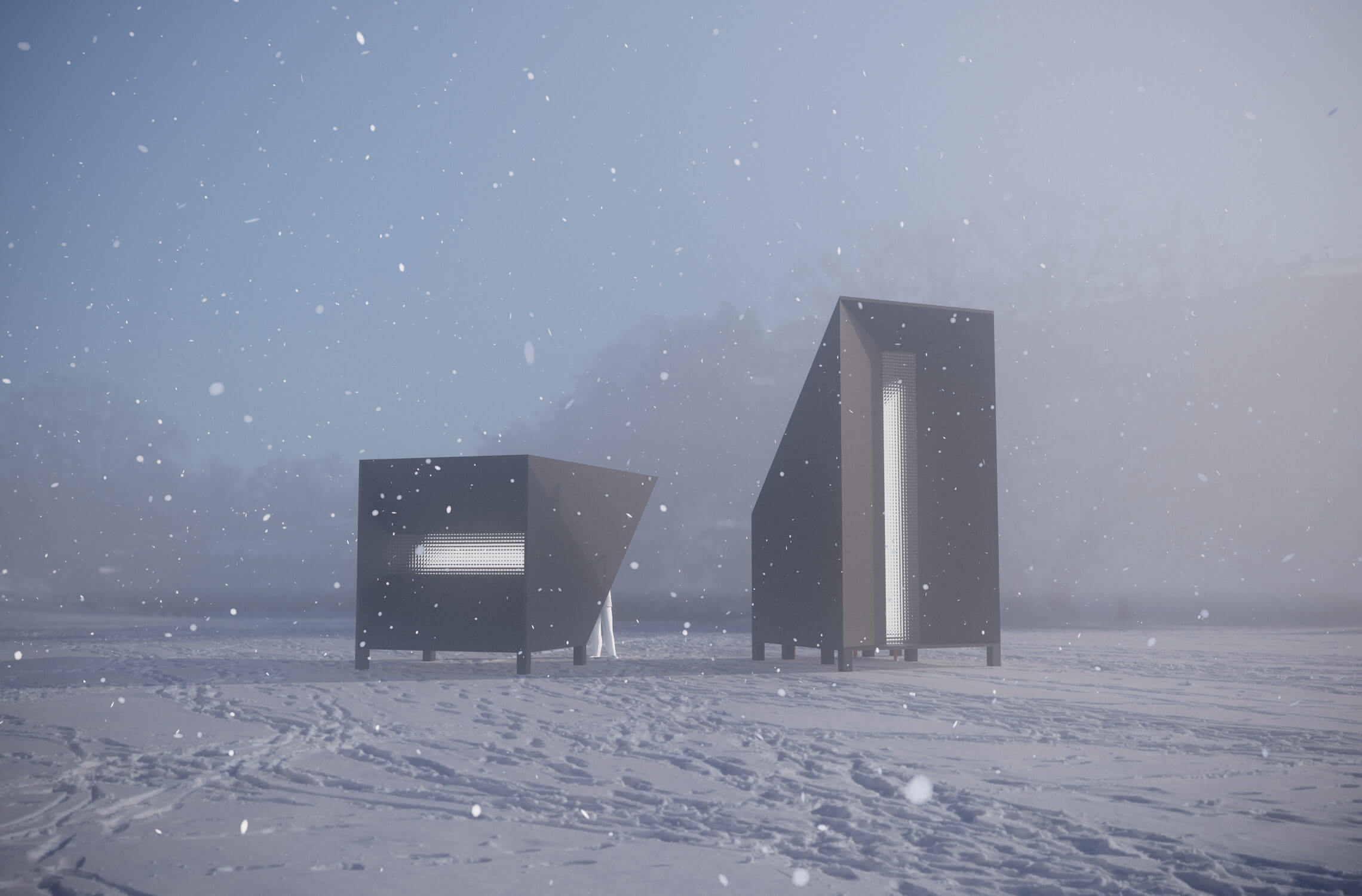
“The times of pandemic have changed our habits in multi-scalar aspects, but it especially affected the way of how we perceive the world outside of us. More explicitly, it shifted our communication with people, interaction with the environment and the perception of our experiences by means of a single surface: the digital screen. Via offering the isolated a new version of coexistence, these screens not only made overcoming this challenging period possible but also became indissociable parts of lives as mobile “interfaces”. The project “enter-face” aims to reveal the dramatic influence of these screens, therefore, presents a spatial atmosphere that brings people together by means of a common vision\image while isolating them physically. It proposes two dark boxes with distant holes for people to get their upper bodies inside and stay detached from one another. Within the boxes, a textured transparent surface is placed through which the distant visitors, who became a group of viewers now, watch the life outside the box as if they are spectating a never ending moving-image on a screen together.”
Wildlife-guard Chair
Mickael Minghetti, with the guidance of Andres Jimenez Monge | France and Canada
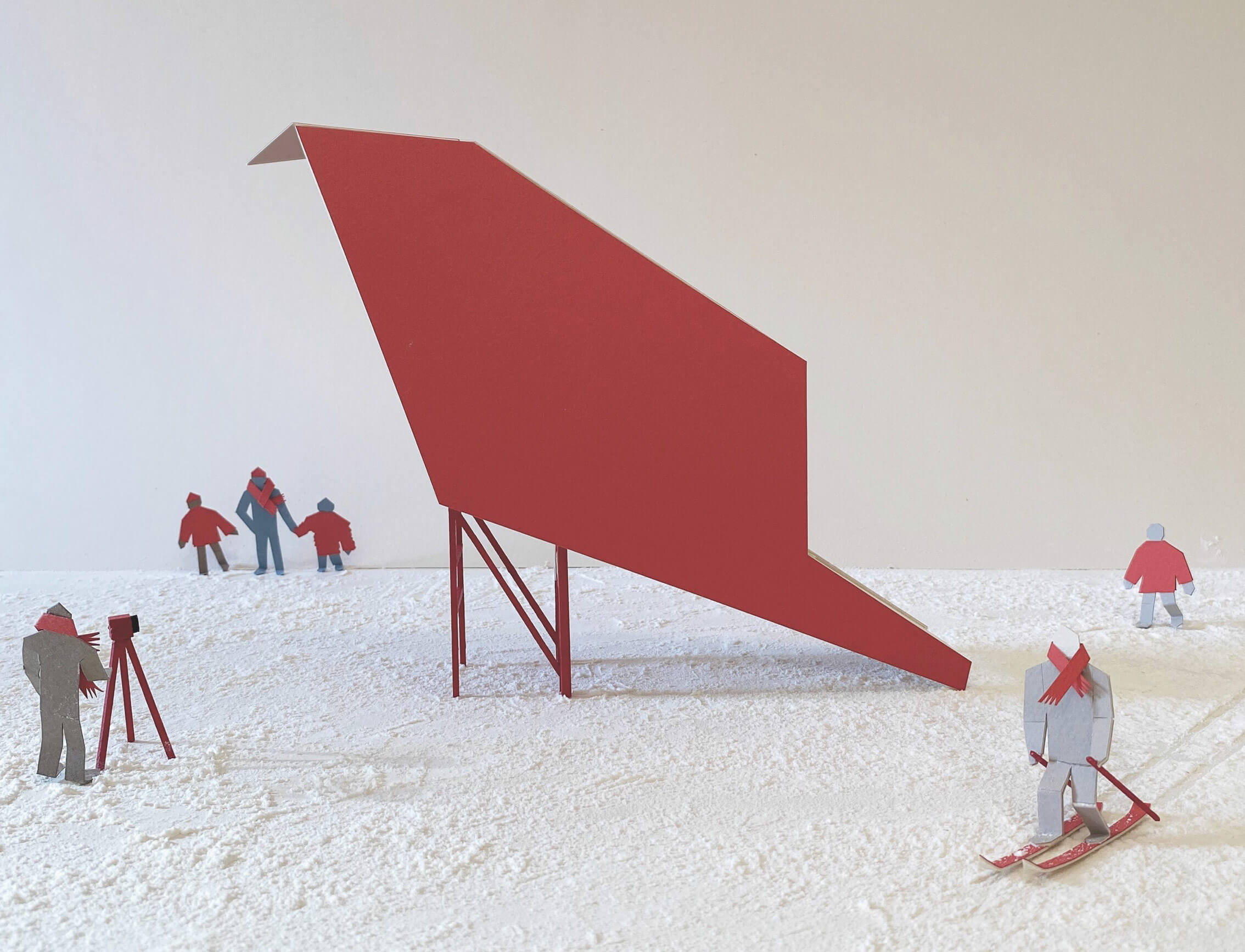
“Inspired by the northern cardinal bird—a specie present all-year round in Ashbridge’s Bay Park—the station seeks to engage the visitors with Toronto’s wildlife. The diversity of species taking refuge in the dense urban environment is both remarkable to observe, and critical to preserve.”
S’winter Station
Evan Fernandes, Kelvin Hoang, Alexandra Winslow, Justin Lieberman, and Ariel Weiss; led by Associate Professor Vincent Hui, Ryerson University’s Department of Architectural Science
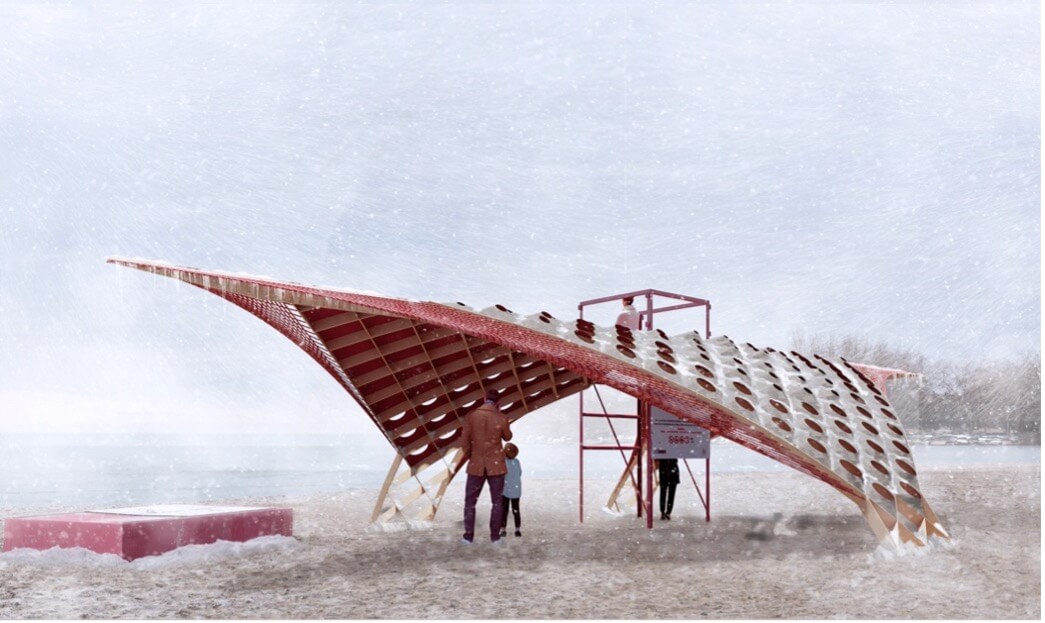
“The forces of nature are relentless. Like the falling snow of the sky and the shifting sands of the beach, the pavilion embraces local wind, snow, and sun conditions. Following these directions of force, the pavilion’s wings embody movement by harnessing snow and mitigating strong winds. Beach towels have been formed into dynamic concrete panels with varying openings. These panels control the amount of light and snow allowed to enter, while also creating unique views outwards. Together, the panels and wings protect users and encourage them to engage with their surroundings. Where the lifeguard station, beach towels, and marine ropes are more frequently used in the summer, the pavilion achieves resilience by employing these objects in the winter. The pavilion acts as a shelter for the community where winter conditions are celebrated by harnessing and adapting to natural forces.”
Introspection
Christopher Hardy, Tomasz Weinberger, Clement Sung, Jason Wu, Jacob Henriquez, Christopher Law, Anthony Mattacchione, George Wang, Maggie MacPhie, and Zoey Chao; led by Associate Professor Fiona Lim Tung, University of Toronto John H. Daniels Faculty of Architecture, Landscape and Design
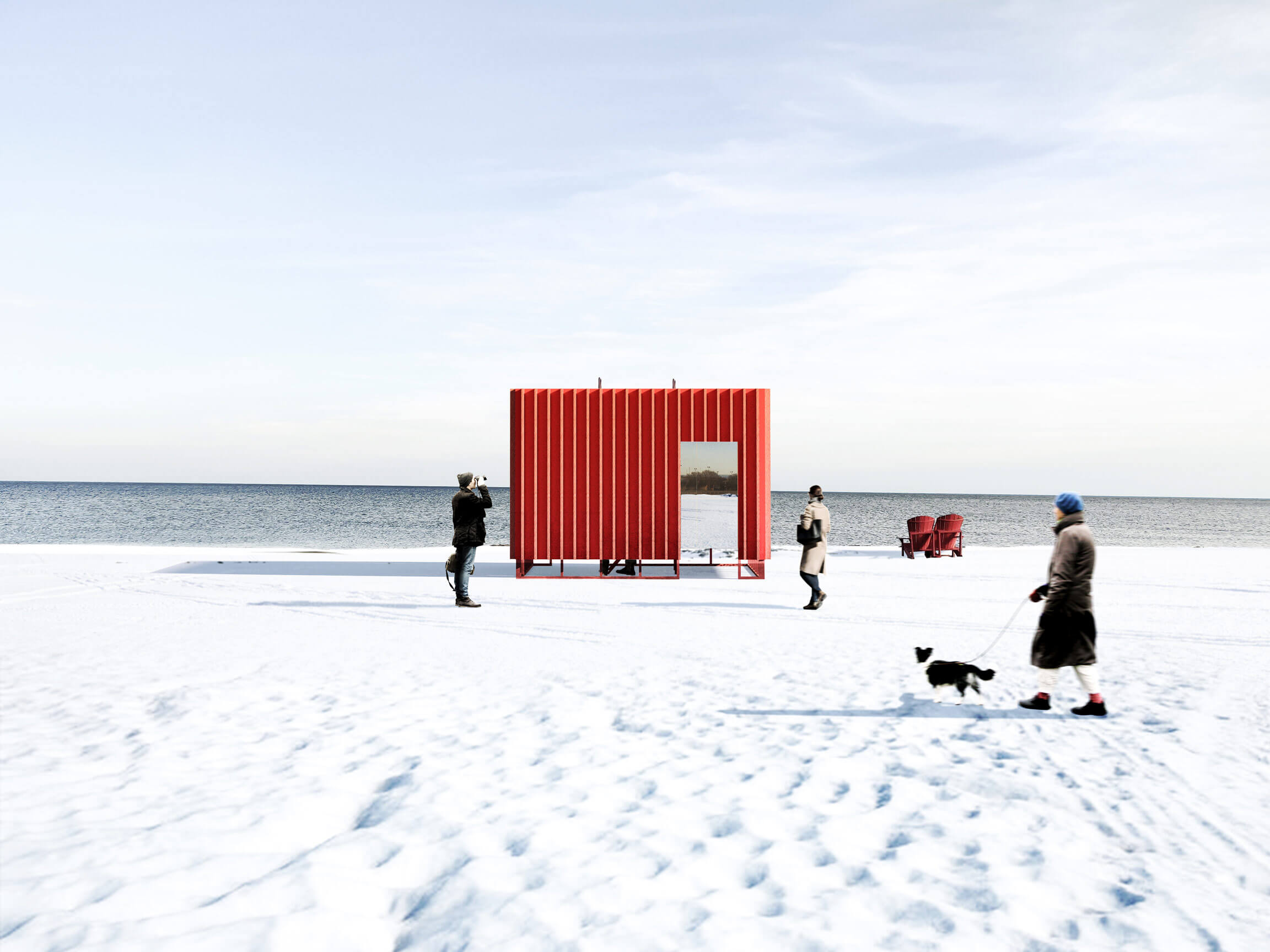
“In keeping with this year’s theme of resilience, we chose to base our design on the emotions felt throughout the past two years’ worth of quarantine and isolation. Playing with the idea of reflection, we utilize mirrored walls to cast the visitors as the subjects of our bright red pavilion, titled Introspection. While the trellis roof allows the sun to illuminate the interior and its visitors, the red lifeguard tower stands unyielding in the centre of the pavilion, reminding us of the inherent stability within us. In highlighting the subject’s presence, we hope to promote introspection into one’s own emotional resilience as one faces their own reflection. From afar, Introspection appears to float on the beach’s horizon. Behaving like a visual constant in the wild, Introspection and the lifeguard towers remind us that no matter what the whirlwinds of life may bring, they endure it all and remain resilient to adversity.”
One Canada
Alex Feenstra, Megan Haralovich, Zhengyang Hua, Noah Tran, Haley White, and Connor Winrow; led by Assistant Professor Afshin Ashari, University of Guelph, School of Environmental Design & Rural Development
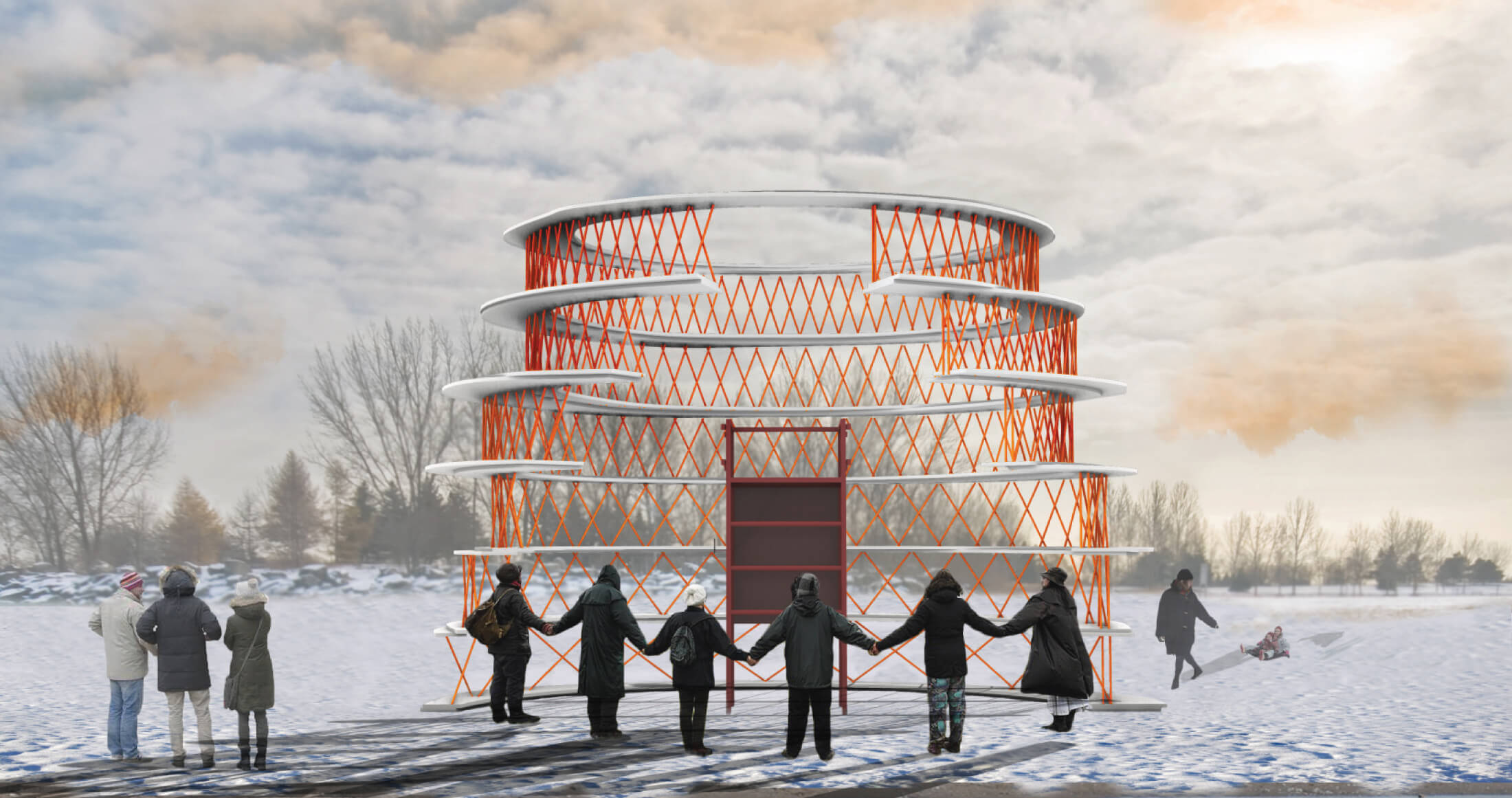
“The Indigenous Peoples in Canada are an inspirational example of resilience due to their ability to withstand adversity and persevere through generations of oppressive colonial policies. Historic injustices persist, including the effects of cultural genocide from the residential school system of Canada. Here we symbolize bridging the gap between Indigenous and non-Indigenous Peoples through gathering. Accomplished through the support of the seven grandfather teachings, represented by the seven rings of the installation, that originated with the Anishnabae Peoples, passed down through generations that ensures the survival of all Indigenous Peoples: Wisdom, Love, Respect, Bravery, Honesty, Humility, and Truth. Orange represents the National Day of Truth and Reconciliation, and the reality that the support of non-Indigenous Peoples, as Indigenous Peoples assert rights to self-determination, will strengthen relations and begin to redress the historic wrongs. Orange is displayed in the ropes where the pattern pays homage to the creation of drums, where the ropes were weaved to honour culture. The installations flow towards the lifeguard stand reinforces the strengthening of the relationship and that the protection of Canada hinges on the unity between peoples. We aim to symbolize movement to a new relationship, one based on mutual respect that honours Indigenous treaties and rights. The road forward is long and nonlinear, but we commit to take the journey together.”








